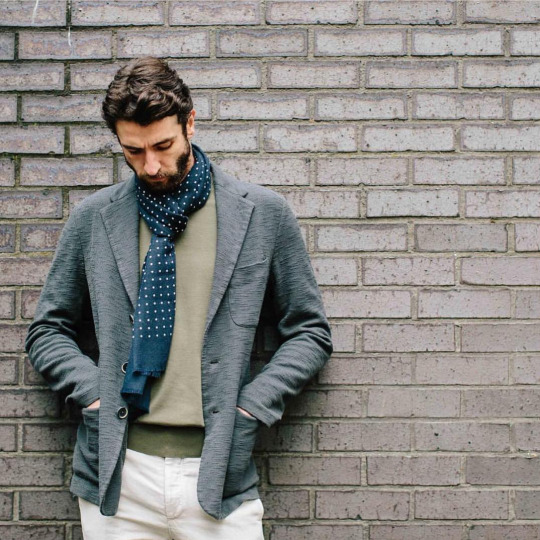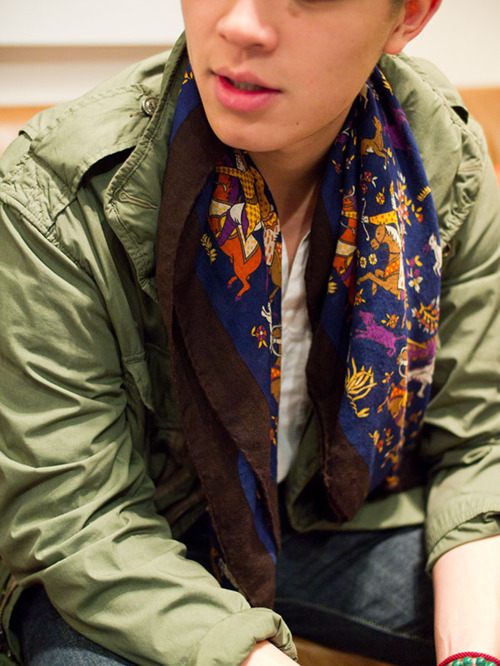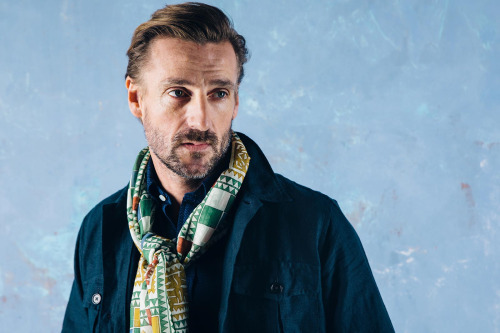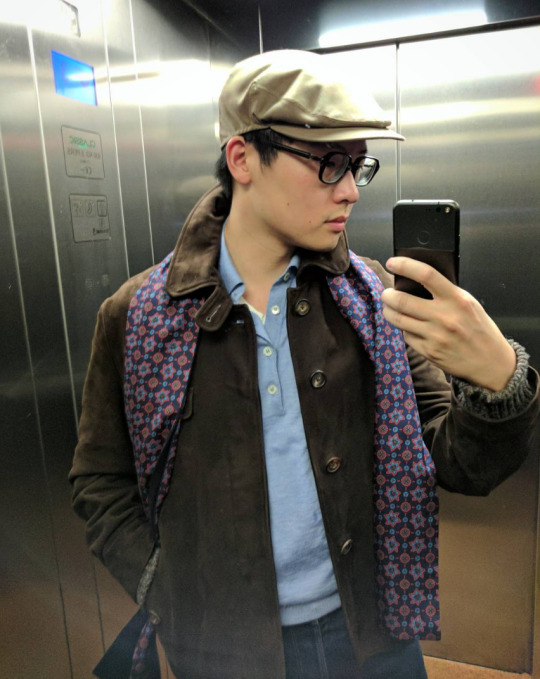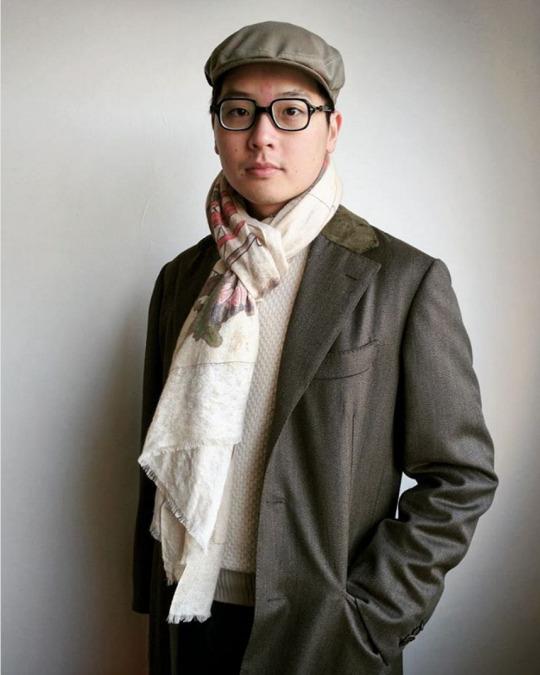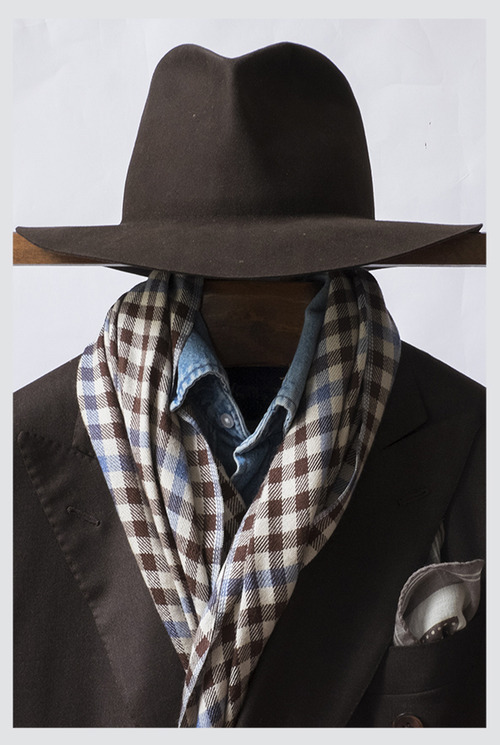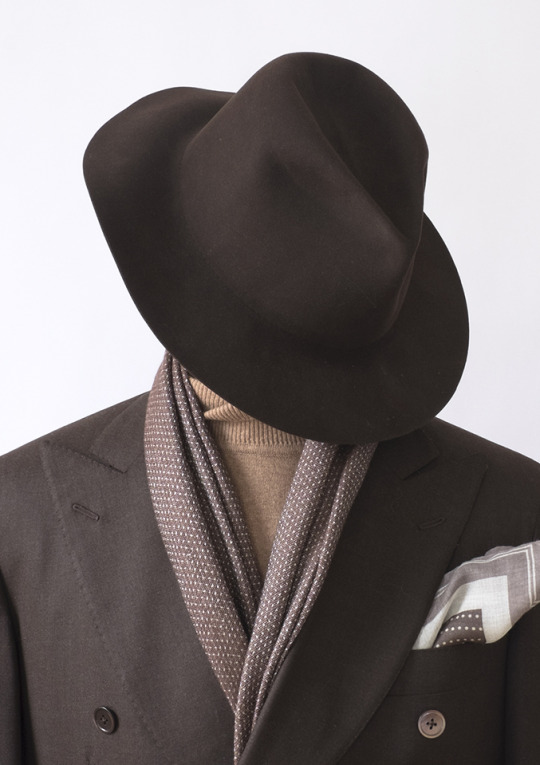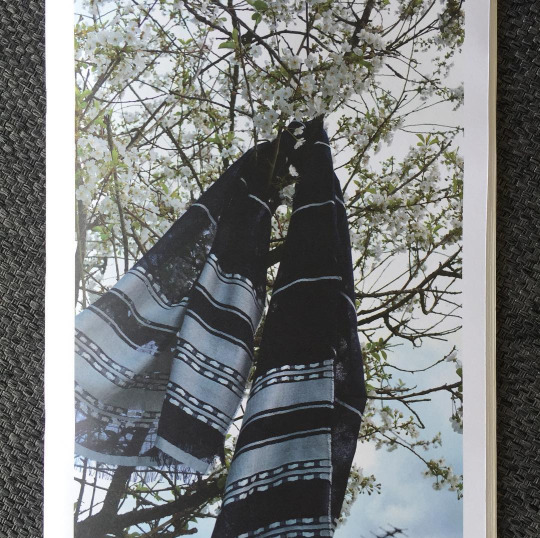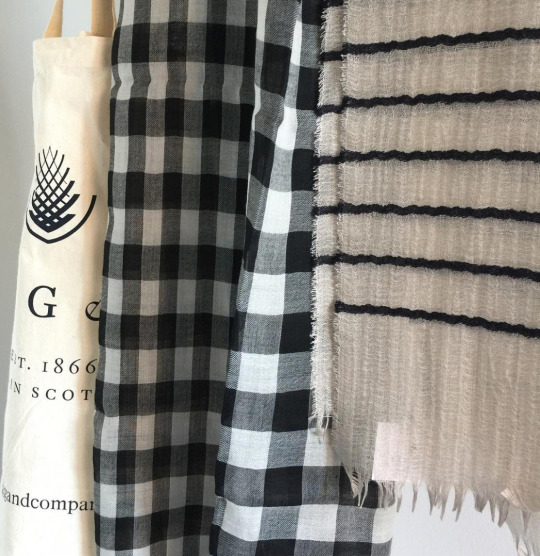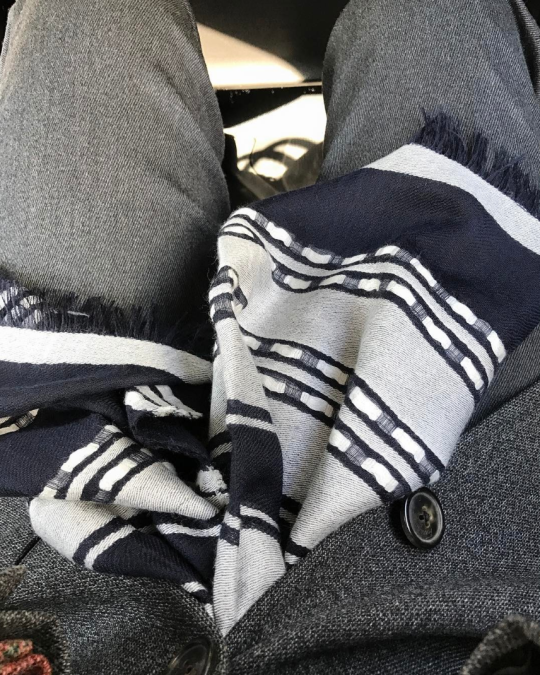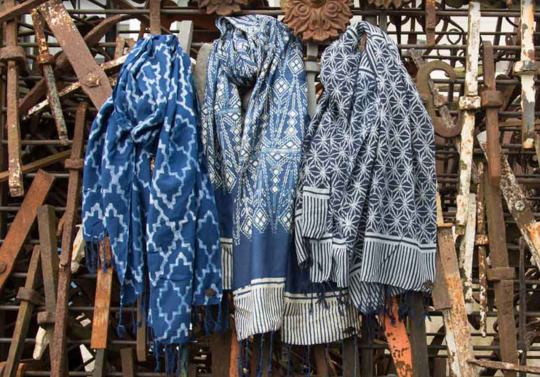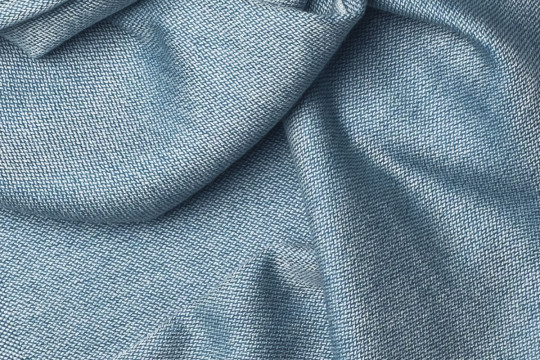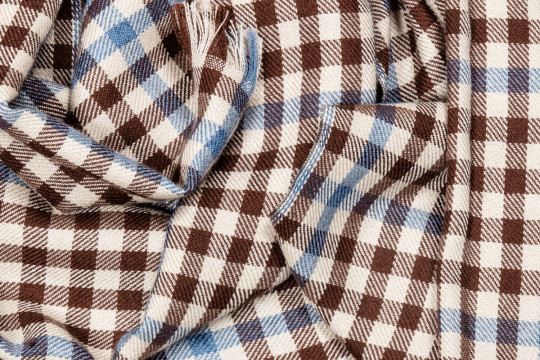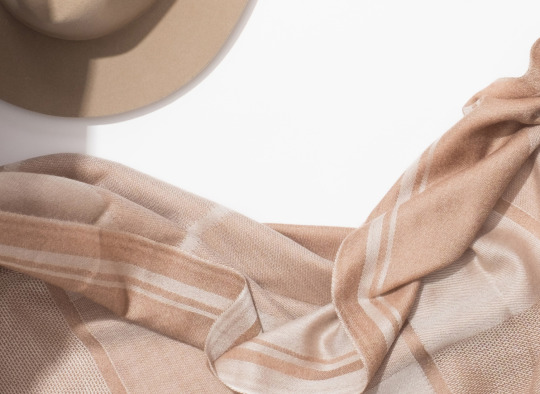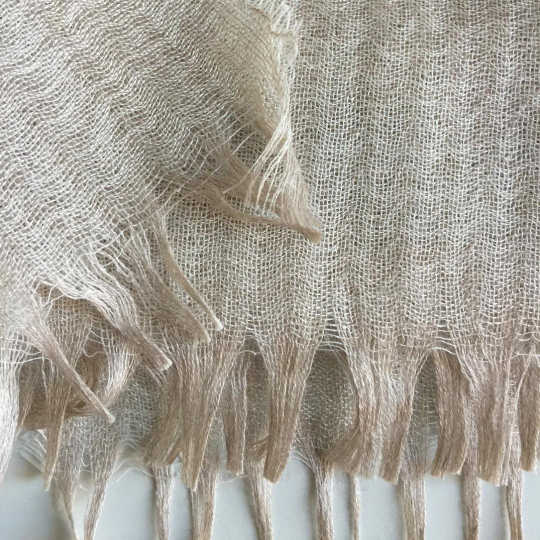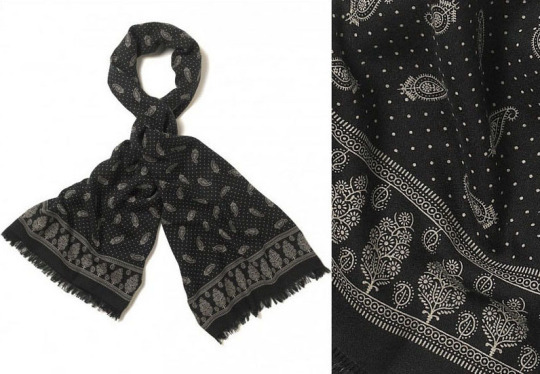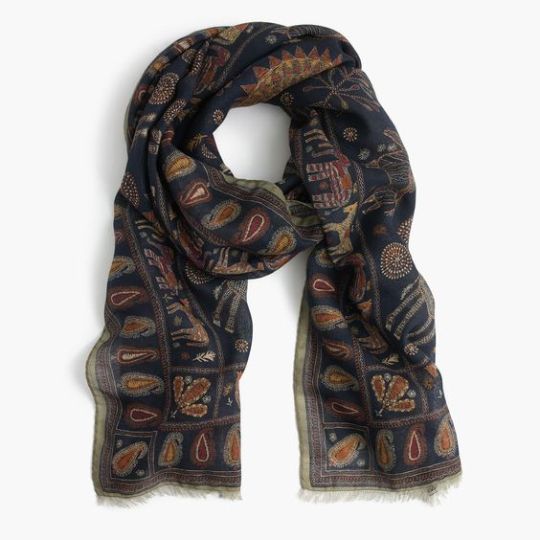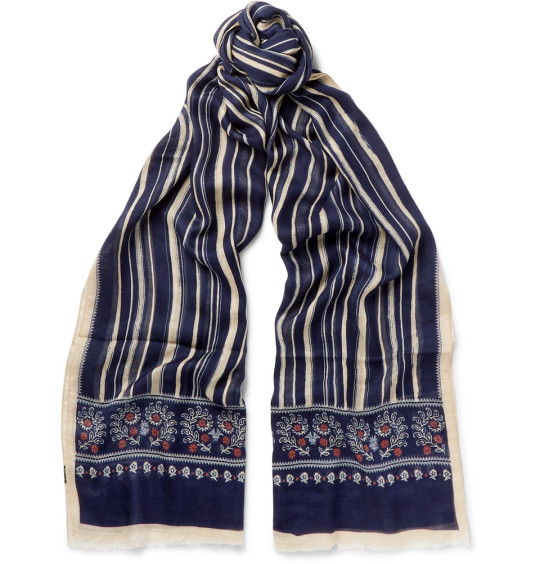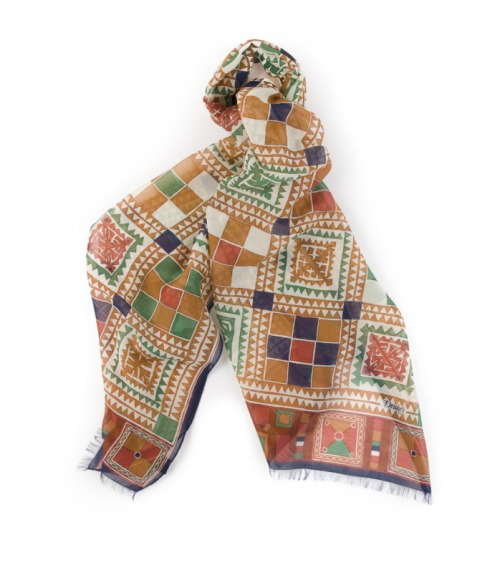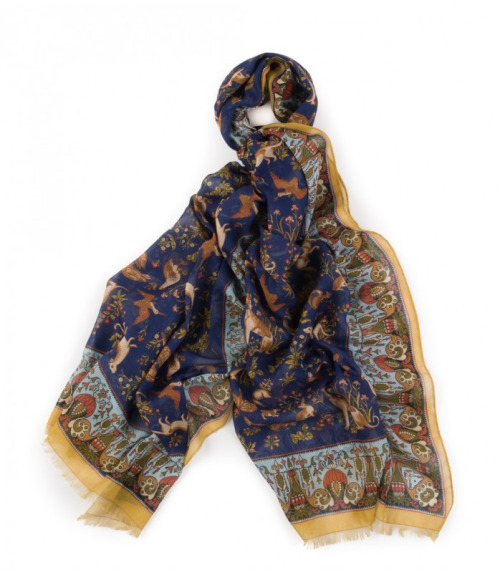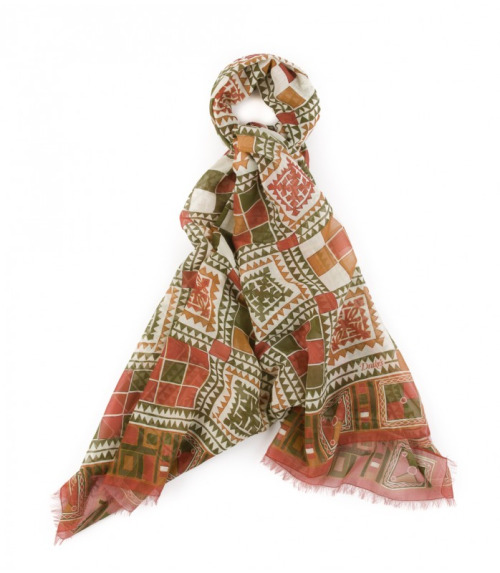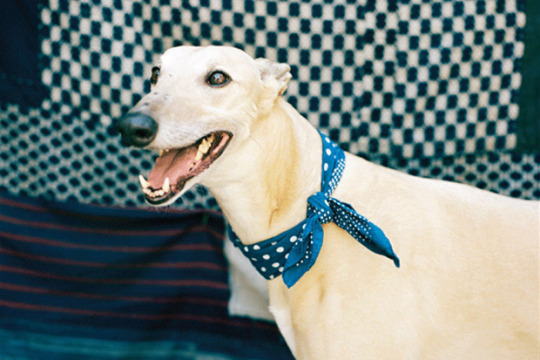
There’s a pretty narrow window for when you can wear a spring scarf. And that time is basically now until the end of May – when the weather can be wildly erratic. Crisp mornings are followed by warm afternoons and cool evenings, with a constant chance of spring showers or gusty winds throughout. On those days, having a small, easily packable accessory that can keep you warm isn’t such a bad idea.
I also think men look better with a bit of neckwear. Bruce Boyer said something similar in his book True Style, which he opens with a chapter on scarves:
Call it what you will – ascot, cravat, stock – the scarf at the throat is the tested and true answer to the naked neck. It is also the answer for all those baffling formal but “dressed down” occasions when a coat-and-tie are too stuffy, but slacks and a polo shirt are too scruffy. A scarf at the neck provides the right accoutrement to a cashmere cardigan, tweed jacket, navy blazer, or summer sports coat. Nothing so exactly achieves the air of casual elegance, of sporty self-confidence, as a mannerly fold of fine silk or lightweight cashmere with an open collar.
It’s little surprise too. For the last few hundred years, Western mens’ style has been mostly defined by the cut of a jacket and style of neckwear. The second gives decoration to the first – taking up that important v-space around the chest (or just above the neckline). Think of Sir Francis Drake in his ruff collars or King Charles II sporting laced-edge neckcloths. Those eventually gave way to the cravat, which was brought to Western Europe by way of French soldiers who fought in the Croatian War (as Boyer notes, Croats tied their collars together with long, flowing strips of fabric, and cravat is just the French word for Croat).
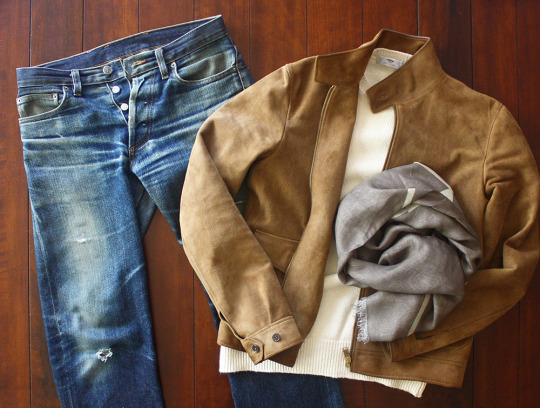
Cravats were the genesis for the modern necktie, but as those have become less popular, men have – almost for the first time in centuries – forgone neckwear entirely. And for the worst, I think. Coats almost always look better when there’s something in-between the opening. If neckties are too formal, and ascots too aristocratic, then the best solution is a comfortable and jaunty scarf. For spring, choose something made with a looser weave. Linen- and modal-blends can be especially cool wearing.
Some favorites this season:
- Begg: One of the oldest and best weavers in Scotland. Begg used to be a private label producer for some of the world’s biggest luxury brands, but today they also have a house label. The weaving and finishing here are incredible. Find them at No Man Walks Alone, The Hanger Project, Mr. Porter, and Begg’s site.
- Christian Kimber: Christian makes some of my favorite pocket squares, and it’s just a short jump from squares to scarves. I have this brown scarf from him (pictured above with a Saint Laurent jacket, Inis Meain sweater, and 3sixteen jeans). Brown can be a much more nuanced color than people give it credit for, and this shade goes perfectly with olive field coats, tan suede jackets, and navy sport coats. You can find Kimber’s scarves at No Man Walks Alone and Christian’s own site.
- Drake’s: One of my favorite makers for almost anything – ties, pocket squares, jeans, and of course scarves. Michael Hill and his team just get everything right. I love these patchwork designs, which look like they were inspired by American quilts (relevant given the recent Raf Simons for Calvin Klein collection). The Armoury also has Drake’s Indian block prints, which I think have just the right amount of playfulness for spring. Most of all, I’m thinking about picking up these two navy pieces for myself – the first being a spongy, slightly oversized modal-linen blend; the other a softer, thinner silk-modal print. Both have a nice, airy feel.
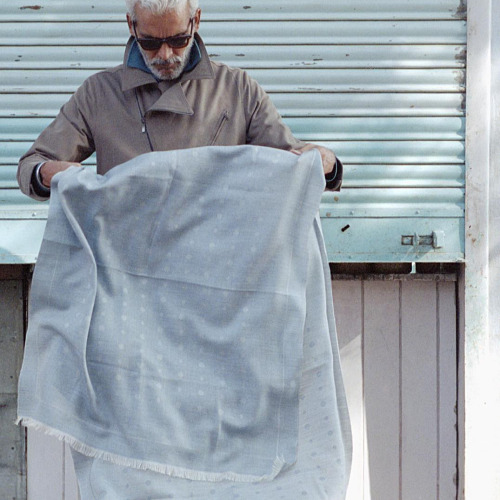
- Stoffa: My friend Agyesh is one of the best textile designers I know. Really wonderful patterns that feel contemporary and classic at the same time (little surprise given his work at Isaia). His scarves are great year-round, but the colors are particularly well suited to spring. Gentle pastels; creamy hues. I like his oversized scarves most, but the slightly smaller 71″ x 20″ sizes may be more manageable in the springtime when you’re not wearing an overcoat.
- Indigo People: Indigo People has really nice, indigo-dyed scarves. Being cotton, these don’t wear as warm as wool or cashmere, but they’re still generously sized (nice for building visual interest). The scarves have a slightly dry, scratchy texture, but they comfortable enough against the skin. Find them at Standard & Strange, Cultizm, and Indigo People’s own site. For something similar, check out Kiriko.
- Byrios: Karina Rios is a textile designer who lives in Copenhagen. Her scarves are a bit expensive, but she hand-weaves everything herself on a small, wooden loom. That means they’re also a bit more loosely woven than machine-made scarves, which gives them an airy, breathable quality. Tip: if you’re willing to pay for postage, she can send you some sample swatches. That way, you can see the fabrics in person. You can also find her on Instagram.
- Big, bold prints: A big, boldly printed scarf can look sophisticated if you keep everything else in your outfit toned down (see Mark Cho below in a cream-colored scarf and an olive sport coat). The Armoury carries some great models from Liverano, Drake’s, and their own house-line, while Skoaktiebolaget stocks some wonderful pieces from Rubinacci.
- Anokhi: Recommended by a reader. These thinner, lightweight cotton voiles come in a bunch of handsome block prints (I like this one). I don’t have any direct experience with these, but at ~$28 a piece, you’d hardly be losing out on much. The 30″ x 30″ scarves can be folded up and worn like neckerchiefs.
- Put This On: Finally, a site I work for, Put This On, has some great scarves made from a combination of Japanese cotton boro and cream silk. My friend Jesse gifted me one last Christmas and I love wearing it with a vintage Schott double rider. Great for workwear and contemporary casualwear.

